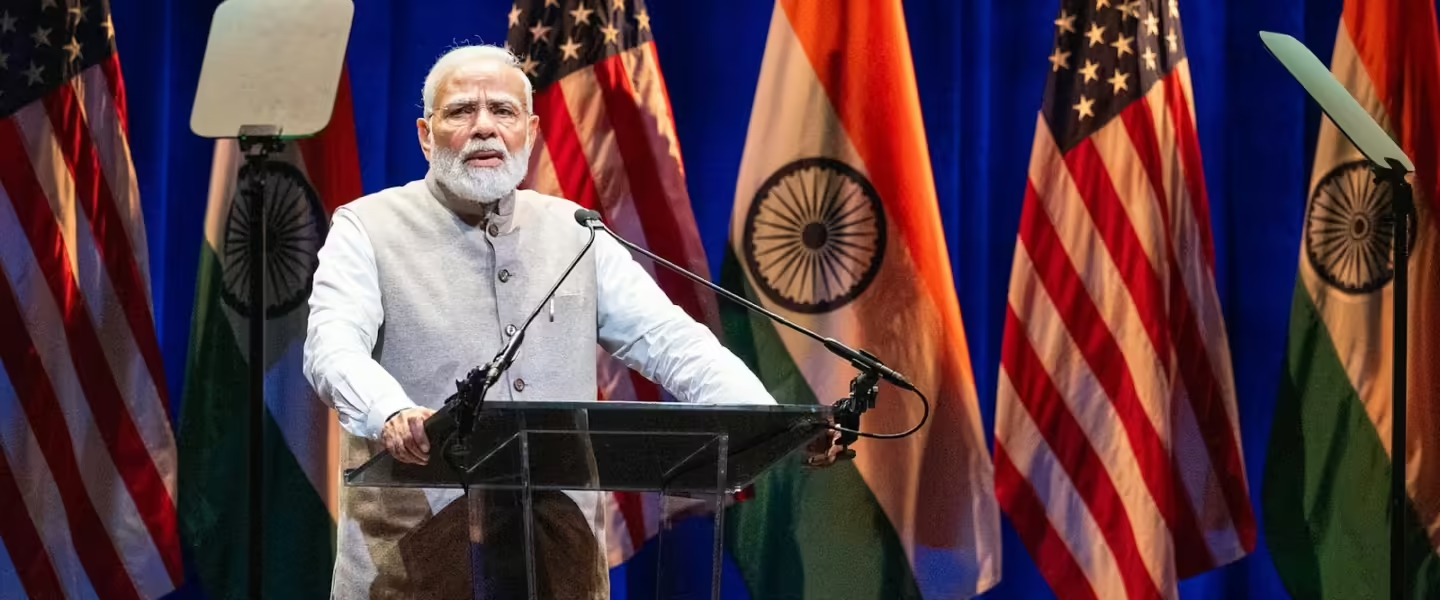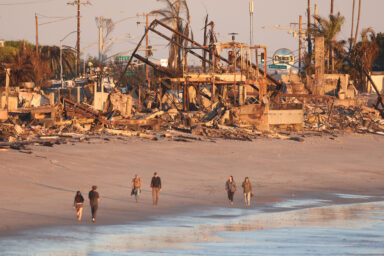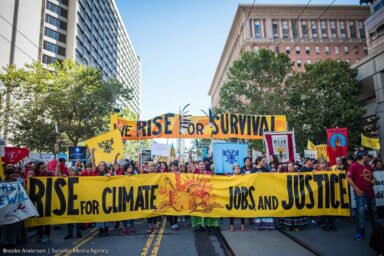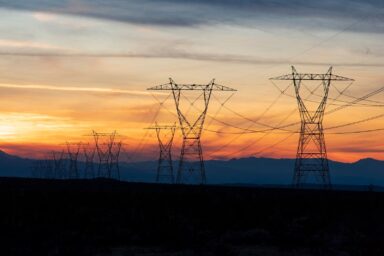A decade after the BJP came to power, its 2024 manifesto reveals a lack of bold climate and environmental action, reflecting the challenges of governance.
|
Listen To This Story
|
India is in the midst of a massive general election lasting over a month and a half and involving nearly a billion voters. It is also experiencing a series of heat waves, with temperatures exceeding 40 C.
Strikingly, though, the election manifesto of the Bharatiya Janata Party (BJP), the leading party in the National Democratic Alliance and widely seen as the frontrunner, barely mentions climate change.
The manifesto mentions the specific term just once — in its last chapter on sustainability — in the context of building resilience for coastal communities. The chapter, like most in the BJP’s manifesto, is decidedly upbeat — choosing phrases like “climate smart” and “climate resilient,” with no measurable indicators of what they mean, or specific ways that the government will act. The only downbeat note is a passing mention of increasing disasters in the Himalayan region.
The sustainability chapter is also striking in its avoidance of measurable goals, except for “achieving national air quality standards in 60 cities by 2029.” Another phrase, working “towards achieving net zero emissions by 2070” lays down a goal, but there are no details about how this is to be achieved.
How the BJP’s Manifestoes Changed After Coming to Power
The 2024 BJP manifesto stands in vivid contrast to their 2014 one. Ten years ago, before the party came to power, it promised very specific measures, such as introducing cleaner fuels to deal with air pollution, an ecological audit of projects, pollution indexing of cities and townships, as well as promises on expansion of social forestry. A section was dedicated to the Himalayas, with specific promises to launch a “National Mission on Himalayas,” an intergovernmental partnership, create a “Himalayan sustainability fund” and a central university dedicated to “Himalayan technology.” Of these, only the first commitment has been fulfilled.
By 2019, after five years in power, climate change had almost entirely disappeared from its manifesto. The term was mentioned only in the context of India’s impressive installation of renewable power. The only measurable goal was the reduction of air pollution in 102 of India’s most polluted cities “by at least 35% over the next five years.”
According to IQAir, the annual average concentration of particulate matter of less than 2.5 micrometers in diameter (PM2.5) — the most dangerous form of air pollution — in India in 2019 was 58.1. It went down to 51.9 in 2020, then rose back up to 58.1 the next year. It dipped again to 53.3 and then rose slightly to 54.4 in 2023. In other words, air pollution did come down – but only by 6 percent, and it was not a steady trend. Furthermore, 42 out of the 50 most polluted cities in the world continued to be in India during the period 2017-23.
For what it was worth, in the 2019 manifesto the Himalayas were given a separate section from the environment in general, but all that was promised was a “green bonus” to Himalayan states in order “to facilitate the protection and promotion of forests.” This has not been nearly enough. As India votes, forest fires have ravaged Uttarakhand, an Indian Himalayan state prone to such disasters. The only time that Uttarakhand saw a significant drop in forest fires over the last five years was during the COVID-19 pandemic.
If the BJP’s 2024 manifesto is light on climate change and environmental issues, it seems to reflect the lived challenges after a decade in government. This marks a stark contrast to the ambitious and measurable agenda it presented in its 2014 manifesto. The party’s consistent inability to fulfill its earlier pledges appears to have prompted a scaling down of its public commitments, rather than an increase of its ambitions.
What Is at Stake
But India and its citizens can scarcely afford to lower their ambitions in dealing with climate change.
In 2021, the Council on Energy, Environment and Water estimated that 80 percent of Indians — roughly 1.1 billion people — lived in areas highly vulnerable to extreme hydro-meteorological disasters. The latest research indicates that the first “moist heat waves” — those that will kill by creating “uncompensable heat stress” — will affect 2.2 billion people living in the Indus basin, largely in India and Pakistan. The coastal communities mentioned in passing in the BJP’s manifesto account for 250 million people, a fifth of India’s population and 3.5 percent of the world’s, increasingly facing more cyclones and floods, salt water intrusion, and impact on fisheries and droughts.
While some of these projections are for the future, climate change has already had an impact on the monsoons, with almost a quarter of Indian districts experiencing both deficient and excessive rainfall over the last 40 years. This has a huge impact on agriculture in particular, and because almost two-thirds of India’s population is dependent on agriculture, it is the single biggest factor affecting Indian livelihoods, as well as food and economic security.
As hundreds of millions of Indians line up to vote, issues of employment, disasters, health, displacement, and simply surviving are sure to be playing on their minds. However, if the diminishing promises dealing with these issues in the BJP’s manifesto are anything to go by, it seems that India’s dominant party, having learned the scale of the challenge it faces, is choosing to simply ignore it.
This story by Omair Ahmad was originally published by Dialogue Earth and is part of Covering Climate Now, a global journalism collaboration strengthening coverage of the climate story.





